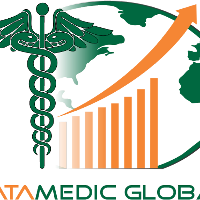We are excited to share with you the recent updates that will be taking place for E/M CPT codes. The American Medical Association (AMA) CPT® Editorial Panel has approved and updated the guidelines for hospital services, emergency department visits, nursing facility services, home visits, and prolonged care services. These changes will take effect on January 1, 2023.
Evaluation and Management Services
The CPT® E/M section underwent significant changes to the office/outpatient codes in 2021. Earlier in the year, the CPT® Editorial Panel further revised coding and guidelines for other E/M visits, effective Jan. 1, 2023. As with the changes to E/M coding in 2021, CMS has finalized “most” of the CPT® 2023 changes made throughout the E/M section. Where the difference occurs is mainly in coding for prolonged services. For Medicare, you will use three HCPCS Level G codes. The physician payment changes planned for split/shared billing, however, continue to be on hold until 2024.
Changes to evaluation and management codes are going to take time getting used to.
CPT 2023 brings 225 new codes sprinkled throughout the code set, but it's the revised and deleted codes in the Evaluation and Management (E/M) section you'll want to pay the closest attention to. So, let's start there in this quick review of the E/M code changes that go into effect Jan. 1, 2023.
Deleted CPT® 2023 Codes
To understand the revised evaluation and management (E/M) codes, we first must look at what codes are deleted in that section of CPT® 2023. Hold on to your hats!
Under the Hospital Observation Services heading, observation care discharge services code 99217, initial observation care codes 99218-99220, and subsequent observation care codes 99224-99226 are deleted.
Under the Consultations heading, office consultation code 99241 and inpatient consultation code 99251 are deleted.
Other nursing facility services code 99318 is deleted.
Domiciliary, rest home, or home care plan oversight codes 99339 and 99340 are deleted, as are custodial care codes 99334-99337 for established patients and 99324-99328 for new patients in those settings.
Under the Home Services heading, the home visit code for new patients, 99343, is deleted.
Prolonged services add-on codes 99354-99357 are also deleted.
There are also several Category III codes that are deleted for 2023. Services represented by these codes may have either graduated to become Category I codes or were deemed obsolete. Laparoscopy codes 49652-49657 are also deleted.
Revised CPT 2023 Codes
The removal of E/M observation codes, and others, required the American Medical Association (AMA) to revise the descriptors of several other codes in the E/M section. For example:
Under the Hospital Inpatient Services heading, initial hospital care codes 99221-99223, subsequent hospital care codes 99231-99233, observation or inpatient care services codes 99234-99236, and hospital discharge services codes 99238-99239 are revised to include “inpatient or observation care,” and
Office or other outpatient consultation codes 99242-99245 and inpatient consultation codes 99252-99255 are revised to include “office or other outpatient consultation.”
Revisions to other codes are in keeping with AMA's guideline changes for E/M levelling using time or medical decision making (MDM). For example, the emergency department codes 99281-99285, initial and subsequent nursing facility care codes 99304-99310, and home services codes 99341-99342, 99344-99350 are revised to require a medically appropriate history “and/or” exam and MDM, instead of all three key components.
The nursing facility discharge codes 99315-99316 are revised to specify that the time must be “on the date of the encounter.”
The prolonged service code 99417 is revised to specify that this code is for an outpatient E/M, rather than an “office or other outpatient” E/M service. Of note: The part stating “on the date of the primary service” has been removed.
Also, in the E/M section, there are minor descriptor revisions to interprofessional telephone/internet/electronic health record consultation codes 99446-99449, 99451, cognitive assessment and care plan services code 99483, and transitional care management codes 99495-99496.
New CPT 2023 Codes
One last change in the E/M section: Whereas 99417 will now apply to prolonged services in the outpatient setting, new code 99418 will apply to inpatient or observation prolonged services (instead of 99356-99357).
In the Surgery section of CPT® 2023, there are new codes in several subsections. For example:
There are three new codes in the Integumentary subsection for implantation of absorbable mesh and removal of sutures.
The Musculoskeletal System subsection has only one new code for total disc arthroplasty.
In the Cardiovascular subsection, surgeons have five new codes for reporting percutaneous pulmonary artery revascularization by stent placement (33900-33904) and two new codes for reporting percutaneous arteriovenous fistula creation in the upper extremity (36836-36837).
Coders may feel they bit off more than they can chew after they dig into the 17 new codes in the Digestive subsection. The codes report esophagogastroduodenoscopy (43290-43291), repair of anterior abdominal hernias (49591-49618), repair of parastomal hernias (49621-49622), and removal of total or near total non-infected mesh or other prosthesis (49623).
The Male Genital System subsection sees only one new code: 55867 Laparoscopy, surgical prostatectomy, simple subtotal (including control of postoperative bleeding, vasectomy, meatotomy, urethral calibration and/or dilation, and internal urethrotomy), includes robotic assistance, when performed.
Coders won't believe their ears when they find out there are only three new codes in the Auditory System subsection. CPT® codes 69729-69728 describe implantation, replacement, or removal of an Osseo integrated implant.
In the Radiology section, there is one new code for diagnostic ultrasound, 76883 Ultrasound, nerve(s) and accompanying structures throughout their entire anatomic course in one extremity, comprehensive, including real-time cine imaging with image documentation, per extremity.
There is a lot more going on in the Pathology and Laboratory section with 11 new codes for various tests.
The Medicine section also received attention with 10 new codes for vaccines, special ophthalmological services, cardiac catheterization, quantitative pupillometry, multi-family group behaviour management, and remote therapeutic monitoring.
Lastly, there is a collection of new Category III codes for reporting emerging technology, services, and procedures.
Team DMG is a steap ahead of incorprating these updates and are prepared to support our physicians.

